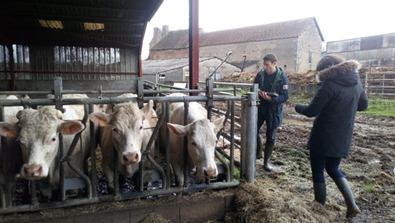In response to a growing concern in society, cattle industry stakeholders are working together to better understand animal welfare on the farm. The BoviWell project was launched three years ago when it became clear that there was no simple tool to assess animal welfare in cattle farming. The aim was an objective assessment of the good practices and efforts made on the farm in terms of animal welfare (food, water, health, comfort, human-animal relations).

This diagnostic tool is intended exclusively for professionals. Thanks to this tool, livestock technicians can evaluate and identify farmers' good practices. BoviWell is currently being rolled out to 1,600 cattle farmers. The diagnosis is composed of two phases. The first in the office with the farmer to introduce the tool and link it to the Good Breeding Practices Charter. The second in the field, it takes 30 minutes to an hour to observe and evaluate the animals in their environment. Based on 30 to 50 measures/questions about the animals or their environment, which are summarized in a score for 9 criteria, a score for the farm is determined. BoviWell respects the European system called 'Welfare Quality' and creates comparability between all farms within France or even between different countries.
 During a BoviWell assessment Photo: IDELE
During a BoviWell assessment Photo: IDELE
For further Information: https://www.agro-media.fr/actualite/filiere-bovine-outil-devaluation-elevage-bovin-27747.html
This Good Practice has an Impact on:
- Socio-economic resilience: Cost of the diagnosis and cost, if it's necessary of the equipment to be up to date on a good practice (example: addition of water troughs)
- Animal health and welfare: Have levers to improve on a practice (example: lameness, respiratory problems/, mortality/ various levers). Highlight the good practices already done on farm and therefore to be maintained by the farmer.
- Production-efficiency and meat quality: Having better indicators of animal welfare, particularly in health, therefore leads to higher long-term production on the farm (less mortality for example)
- Environmental Sustainability: There are indicators on water in the diagnosis (quality and quantity of water given to animals)
Other systems for animal welfare assessment, presented on the BovINE Knowledge Hub are for example EiKoTiGer, WelfaireTM